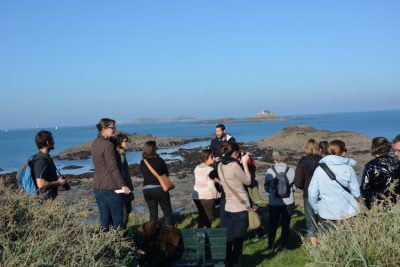Participatory sciences
PDF
In France, many programs exist. One of the most important is managed by the Centre for Ecology and Conservation Sciences at the National Museum of Natural History. It is Vigie-Nature [2], itself composed of many variants involving different taxonomic groups. Some are generalist programs and are interested in the French territory as a whole, including cities: Temporal Monitoring of Common Birds (STOC, short for Suivi Temporel des Oiseaux Communs) [3] or Vigie-Flore [4]. Other projects are clearly dedicated to the urban environment. First of all ” Sauvages de ma rue ” [5] which asks the general public to send inventory data on sidewalk flora, then the “Observatoire de la Biodiversité des Jardins” (OBJ, short for Observatory of Garden Biodiversity) [6] which lists birds, butterflies, snails and garden bumblebees, and finally Lichen go [7] whose object is the lichen growing on urban tree trunks.

Notes and references
Coverage image. [Source: © Nathalie Machon]
[1] Sciences participatives en France (2016). Report prepared at the request of the Ministers in charge of National Education, Higher Education and Research, under the direction of François Houllier
[3] http://www.open-sciences-participatives.org/fiche-observatoire/144
[4] https://vigienature.mnhn.fr/page/vigie-flore.html
[5] https://www.vigienature-ecole.fr/les-observatoires/le-protocole-sauvages-de-ma-rue
[7] http://www.particitae.upmc.fr/fr/participez/suivez-les-lichens.html




